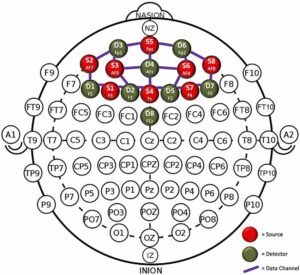Exercise may be a feasible intervention for enhancing executive functioning in children with ASD.
Overall, results from this exploratory study suggest that an acute bout of exercise may improve cerebral oxygenation and inhibitory control among children with ASD, with exercises that are more cognitively and motorically demanding potentially having the greatest benefits. However, further research with larger sample sizes is needed to truly establish the acute effect of exercise on executive functioning in this population.
Objective: Children with autism spectrum disorder (ASD) experience significant challenges in executive functioning. Emerging evidence suggests exercise may improve executive functioning among children; however, these effects and their mechanisms have not been fully explored among children with ASD. The purpose of this study was to explore the acute effect of exercise on cerebral oxygenation within the prefrontal cortex and inhibitory control among male children with ASD.
Method: Participants (N = 12) were 8–12 years of age with a diagnosis of ASD. A within-subject crossover design was employed. Participants completed three 20-min conditions on separate days: circuit-based workout, treadmill walking, and sedentary control. Pre- and post- each condition participants completed a cancellation task (Leiter-3) as a measure of inhibitory control and cerebral oxygenation was concurrently assessed using functional near-infrared spectroscopy (fNIRS). Heart rate, affect, perceived exertion, motivation, and self-efficacy were measured throughout the experiment as manipulation checks and potential psychological mechanisms. A series of repeated measures ANOVAs were conducted to examine intervention effects.
Results: Results demonstrated medium-to-large interaction effects (time by condition) for cerebral oxygenation (η2pηp2 = 0.237) and inhibitory control (η2pηp2 = 0.118). Post hoc analyses revealed that the circuit exercise condition elicited the largest changes in both outcomes. The manipulation checks indicated that the exercises were completed as intended.
Conclusion: These findings suggest that exercise may be a feasible intervention for enhancing executive functioning in children with ASD. More research with larger samples is needed to replicate these findings.
Optode placement in the prefrontal cortex.
A 20-channel, continuous wave, functional near-infrared spectroscopy (fNIRS) system (NIRSport, NIRx Medical Technologies) was used to measure the relative change in oxygenated hemoglobin (oxy-Hb) within the prefrontal cortex during the inhibitory control task. Previous research has demonstrated a high level of agreement between oxy-Hb and blood oxygen level-dependent (BOLD) signals from fMRI, which is considered the gold standard for measuring cerebral blood flow regulation (Strangman et al., 2002). The system is comprised of eight sources and eight detectors, resulting in 20 channels with a sampling frequency of 7.81 Hz. The optodes were placed in the cap based on the 10-10 system (Chatrian et al., 1985) at a uniform distance of 3 cm apart to acquire the hemodynamic measures from the prefrontal cortex (Figure). After placing the optodes in the cap, a thick black over-cap was used to cover the optodes to avoid interference from environmental light.
https://www.frontiersin.org/articles/10.3389/fnbeh.2020.00084/full


